Ever tried hanging a heavy frame and wished for a stud-finder superpower? Dive in to master the art of drilling into wood studs, effortlessly! Ready to transform your walls?
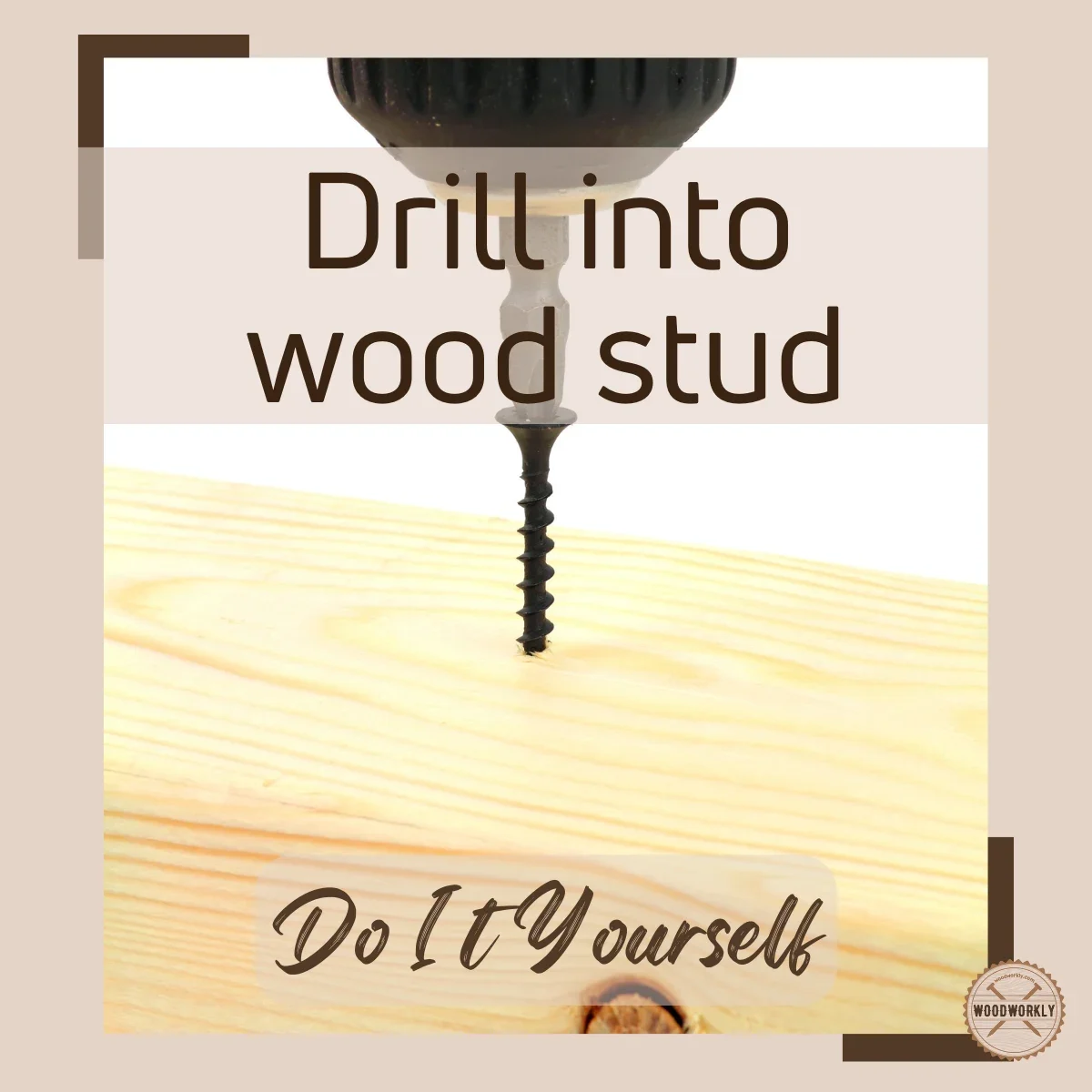
There’re main two types of studs. Some are metal studs and others are wood studs. Metal studs can be found in buildings and construction areas. Wood studs are found in residential homes.
Drilling wood studs is a challenging task since you need to have a good idea about what kind of drill bits you should use, how far can you drill into the stud, and how to drill without weakening the stud.
I was curious about drilling wood studs because of the above reasons. So, I did a deep research about how to do that properly with the help of home renovation magazines and gathered details from some experts.
Here’s what I learned. Let’s find out, How to drill into wood stud?
To drill into wood stud first you need to locate the wood stud with stud finder or by tapping. Then locate and mark the edge and center. Next, select a suitable drill bit and start drilling increasing the speed and pressure. Take out the drill when the hole reached the desired depth.
But that’s just the tip of the iceberg.

You need to be super careful in this process. But at the end of the day, you’ll be able to learn a new skill and able to save money.
In this article we’ll dig to find out, can you drill into a wood stud, how to drill into wood stud properly, what drill bits are the best and how far can you drill with tips and techniques.
Furthermore, I’ll answer some frequently asked questions as well.
Let’s jump in!
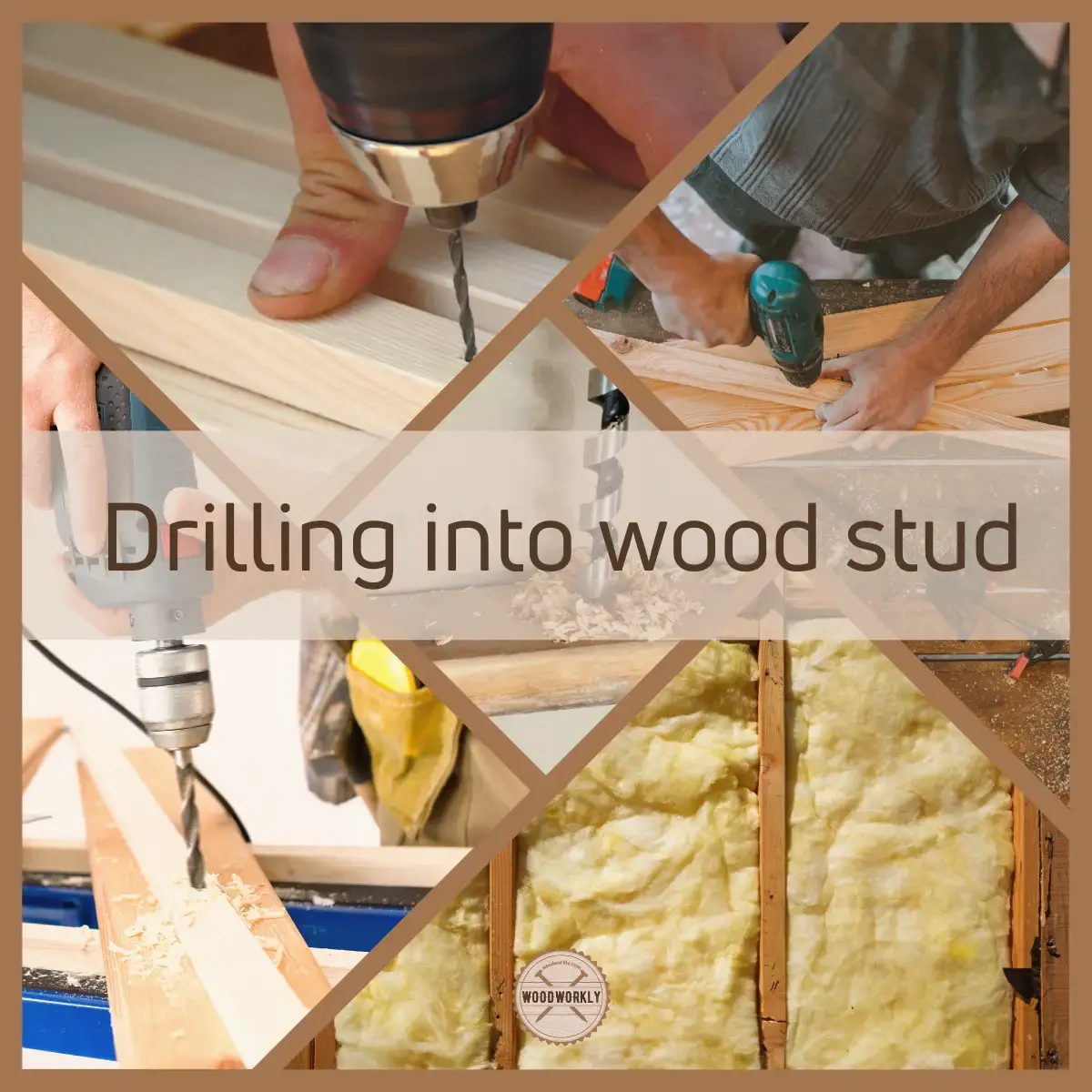
Can You Drill Into A Wood Stud?
Yes, you can drill into a wood stud with no issues. But you need to know where the wood stud is located and the edges and centers of the wood studs before drilling.
Drilling wrong locations can damage the drywall and electrical wires.
Plus, you need to have a clear idea about how far you should drill. This can get by knocking the wood stud.
First, you need to know where the wood stud is. Better if you have a stud finder for this job since it quickly tells you where the wood stud is with such high accuracy.

Or you can use the tapping method to locate wood studs without damaging the drywall. Solid sounds come from wood studs and hollow sounds come from drywall.
Generally, wood studs are placed with a 16-inch gap from the center of each other.
When you’re tapping if it suddenly sounds hollow, measure 16 inches and start tapping to identify the other corner of the wood stud.
Regular drill bits are perfectly fine to drill into a wood stud. There are no special drill bits to drill into wood stud.
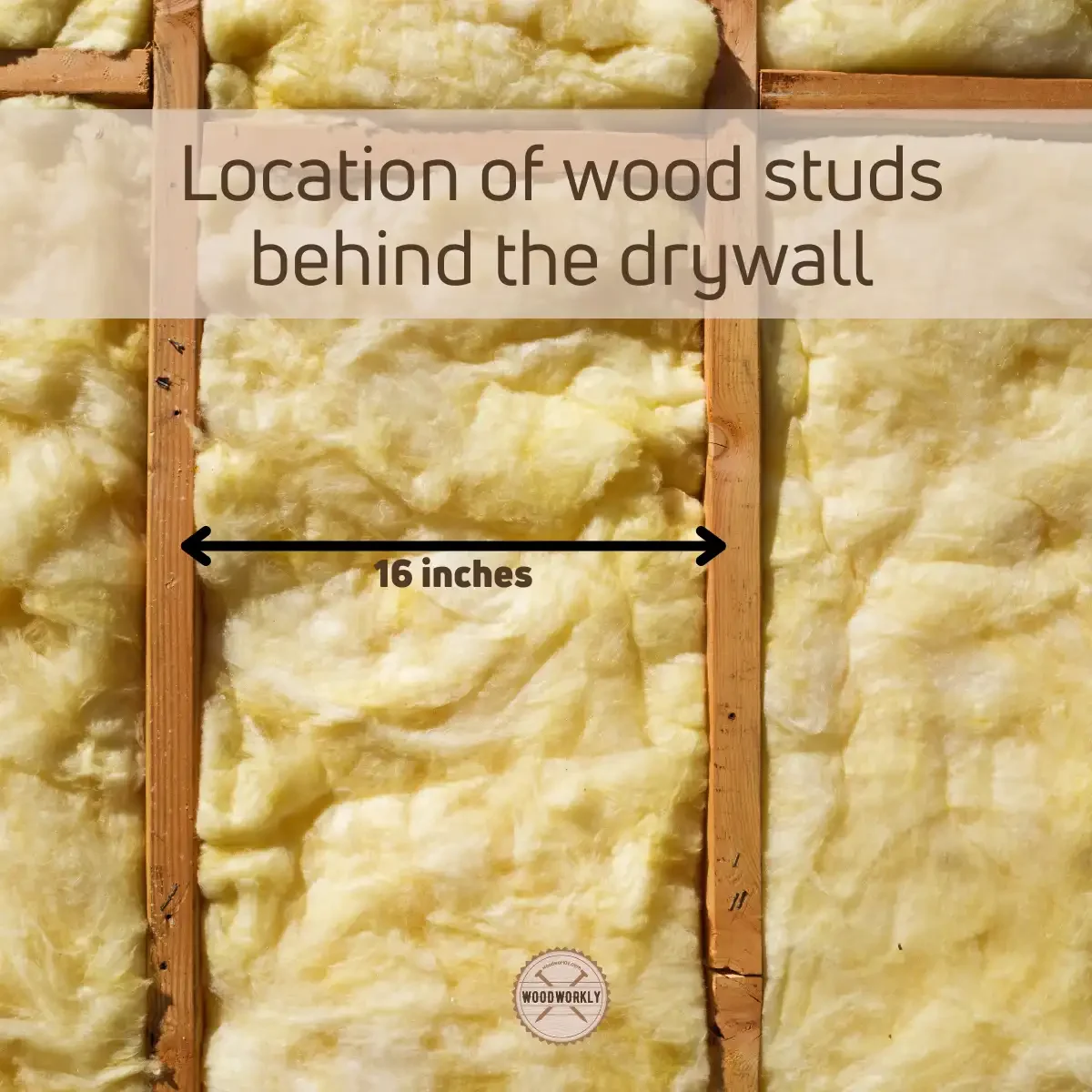
You can easily drill through wood studs with spade bits and auger bits. Studs are placed ¼ inch, ½ inch, or 5/8 inch behind the drywall.
They are 2 by 4-inch beams that are placed vertically and each one is placed with 16 inch or 24-inch gap.
How Do You Know If You Drilled Into Stud?
You know if you drilled into stud by the pressure difference between drywall and wood stud.
As soon as you hit the wood stud, you’ll feel the drill bit penetrate easily through the soft material. that’s the stud.
But if the wood stud is super hard, you’ll feel the drill bit needs a bit more pressure to penetrate the material inside. That’s also can be the stud.

While you’re drilling the drywall with steady pressure, you’ll notice that the pressure suddenly jumps to a new level with less resistance. Congratulations, that’s where wood studs are located.
But if your drill bit won’t penetrate after a certain depth or find it extremely difficult to penetrate, sad to say, your house has metal studs instead of wood studs. Metal studs are hard to drill.
Or if your drill bit hit the nail plate that’s also can be the reason why it does not penetrate.
Nail plate is a metal plate that is nailed to the wood stud helps to avoid drilling the electrical wires.
You’ll feel high pressure on the drill when you hit the nail plate which is an indicator, you’re drilling the wrong spot.
This is why making a pilot hole is important without drilling directly into the stud.
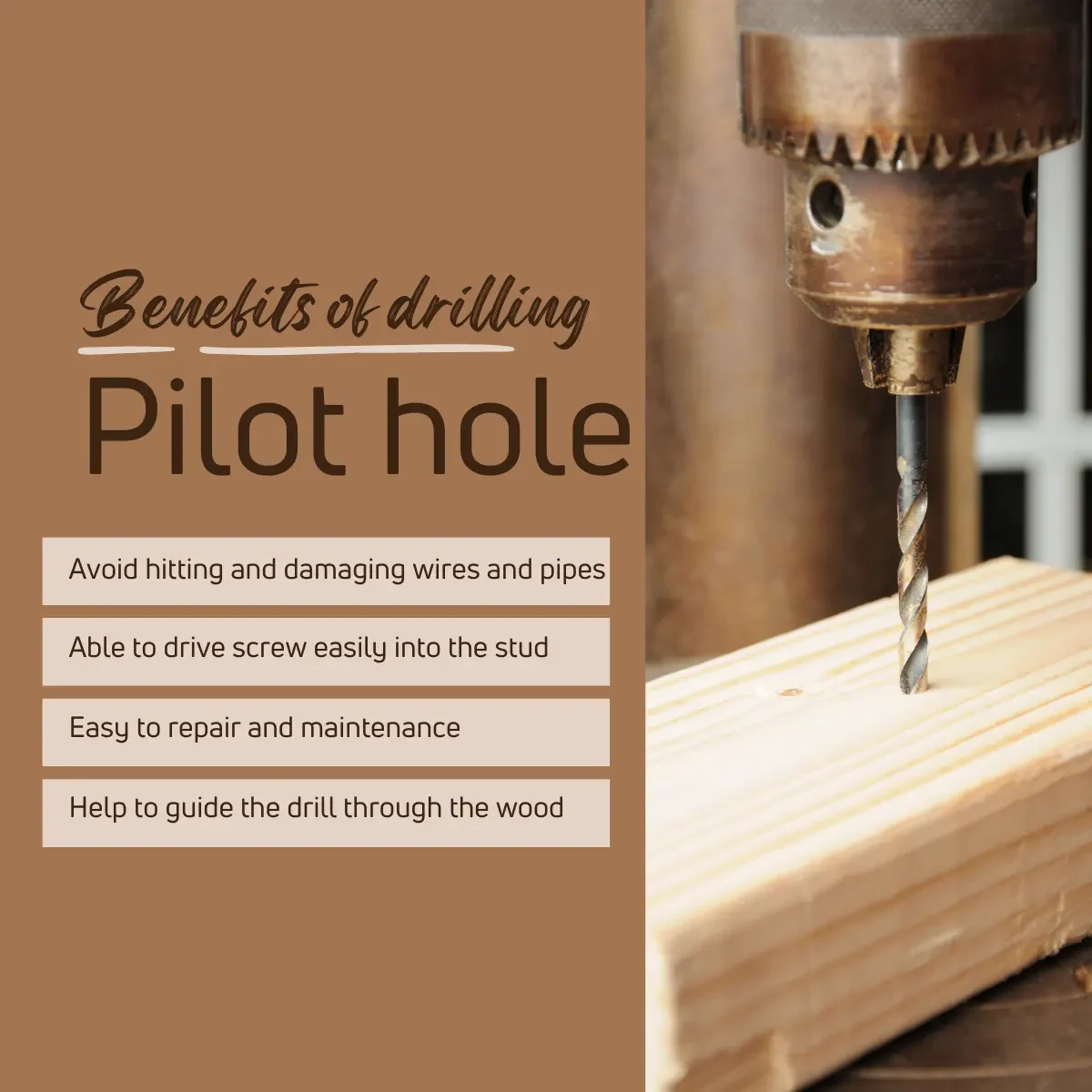
Can You Drill Directly Into Stud?
Drilling a pilot hole without drilling directly into stud is recommended since it helps the screw to penetrate the wood stud easily and avoid the drill bit from hitting the electrical wires and nail plates inside.
Better if you can make pilot holes to drill into wood stud without getting stuck with a short and small drill bit. Drilling through a pilot hole increase the accuracy of the drilling job and make it so much easier to repair after some time.
When you’re drilling focus more on the pressure and the speed you apply on the drill since you’ll notice if the drill bit hits the drywall with the pressure difference.
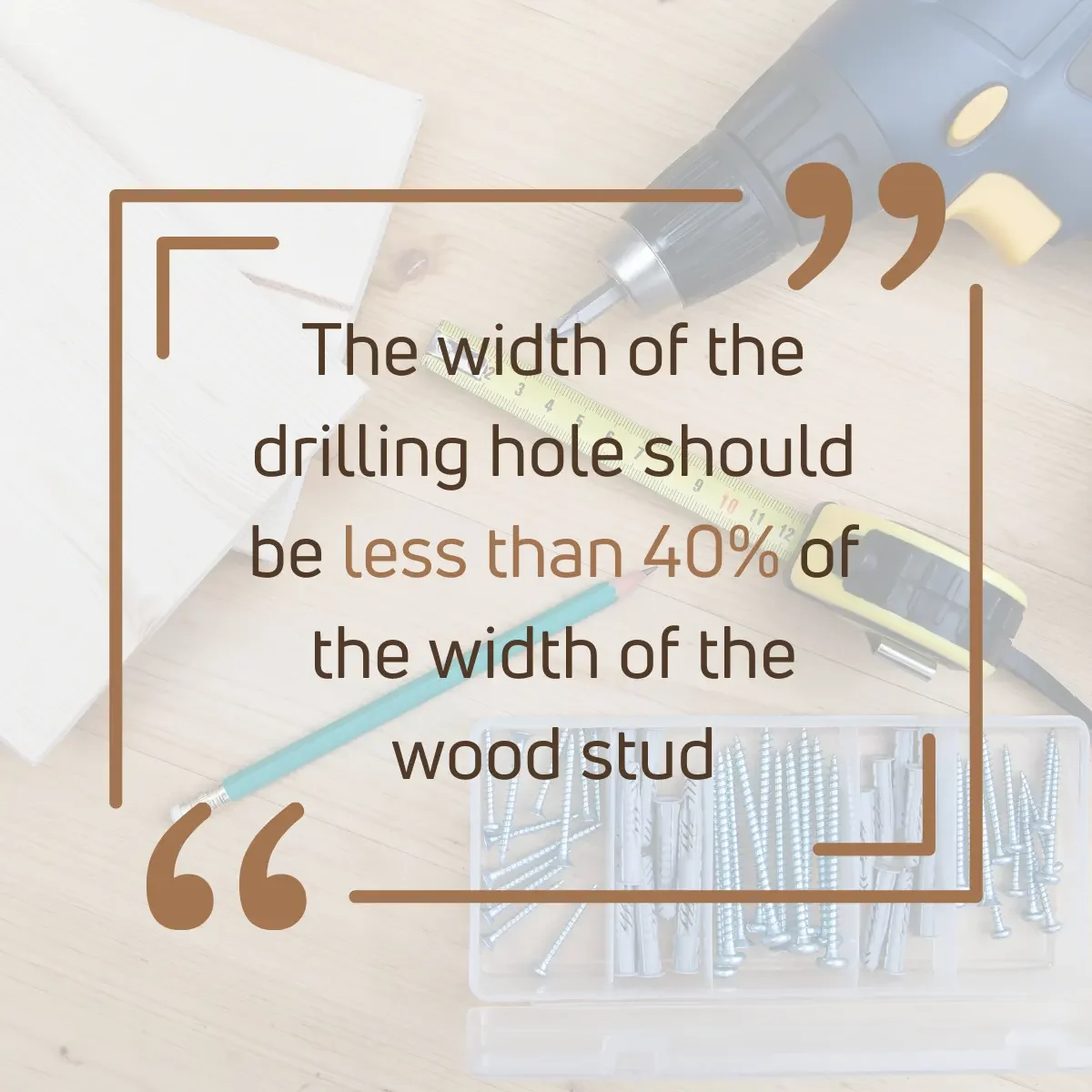
Never drill your drill bit more than one inch into the stud since electrical wires travel through the center of the stud and always drill less than 1-inch depth.
That’s why locating is super important before starting drilling.
Let’s head into the process of drilling into wood stud properly without making any mistakes.
Tools And Materials To Drill Into A Wood Stud
- Power drill
- Drill bits (Auger bits or Spade bits)
- Screw
- Stud finder (optional)
- Measuring tape

Do You Really Need A Stud Finder?
Stud finder is useful to locate the wood stud accurately before starting to drill. It is an inexpensive device that helps to identify the depth of the hole you need to drill and to avoid nail plates when drilling.
With a stud finder, you can quickly locate the wood stud and you won’t go wrong.
Tapping the wall method needs good ears and practice since you need to have the ability to tell the positions of drywall and wood studs by how it sounds when knocking the wall.
You just have to place the stud finder on the flat wall and move it horizontally along the wall right or left.
When you’re moving the finder, it will release a beeping noise for the locations with wood studs that are safe to drill.
The stud finder identifies the wood stud by monitoring the density of the wall. When you press the button, it will create a magnetic field around it.

The magnetic field hits on the surrounding surfaces and sends feedback back to the stud finder.
When a magnetic field hits the wood stud inside it will send different feedback of signal different than the drywall. It will activate the sensor inside which makes a deep sound.
That’s how stud finder operates. Almost all the stud finder works the same, and expensive ones give more accurate results with less than zero error.
Stud Finder Alternatives
If you don’t have a stud finder, you can use the tapping method to identify the wood stud. Solid sound comes from the wood stud and hollow sound comes from other areas.
Or nowadays you can use mobile apps that can install on your mobile device which work as stud finders.
You just have to search stud finder mobiles apps in Google Play Store or Apple App Store and install an app with good ratings on your mobile device.
Those stud finder mobile apps use the internal magnetometer to create a magnetic field around the phone and identify the strengths of the magnetic fields.
But they are not specialized to identify the wood stud. They only detect the changes in a magnetic field by detecting the signals that come from the screws that are used to attach wood studs to the drywall.

When the mobile app identifies the screws, it indicates the locations of the wood studs.
Using stud finder mobile apps is the fast and most cost-effective method of identifying wood studs without spending money. plus, it’s great for people who are not familiar with the tapping method.
Now you have a clear idea about what materials are best to use to drill wood studs. Let’s see what the process looks like.
How To Drill Into Wood Stud?
Drilling wood stud is easy with the correct method and the right equipment. You can use tools and skills to follow this easy DIY method to drill stud holes by yourself.
Here’s the procedure for drilling into wood stud,
- Locating the wood stud
- Mark drilling points and centers
- Select a suitable drill bit
- Drill the pilot hole with a small drill bit
- Drive screw
Let’s discuss each of the above steps in detail to get crystal clear knowledge about drilling wood studs properly.
1. Locating The Wood Stud
First, you should know where the wood stud locates to drill perfectly from the first attempt. Drilling many times can damage the drywall and wood studs inside.
The wood stud is located behind the drywall. The thickness of the drywall varies from ½ inch or ¼ inch or 5/8 inch.
Wood studs are placed with a 16-inch gap from each other. Rarely founds some wood studs placed with 24 inches gap. Mostly, studs run vertically from floor to ceiling.

To find wood studs (wall studs) first, locate the nearest light switch or power outlet and measure 16 inches from there.
Wood studs are 2 by 4-inch beams. They are made of string durable wood and secured to the drywall with screws.
You can locate the position of the wood stud with several methods. They are,
- Using a stud finder device
- Tapping method
- Using a stud finder mobile app
First, let’s find out how to locate wood stud using a stud finder device.
How To Locate Wood Studs With Stud Finder?
- Take the measuring tape and draw a straight line from the nearest light switch or power outlet to your desired mount height.
- Place the stud finder against the wall at the nearest light switch or power outlet
- Move the stud finder slowly along the straight line to the left or right
- Stop the movement when the light flashes or makes a deep sound
- Retrace the last few inches to ensure the exact location deep sound comes from
- Mark the spot with a pencil. This is the left or right edge of the wood stud.
- Move the stud finder in the opposite direction to find the opposite side edge of the wood stud.
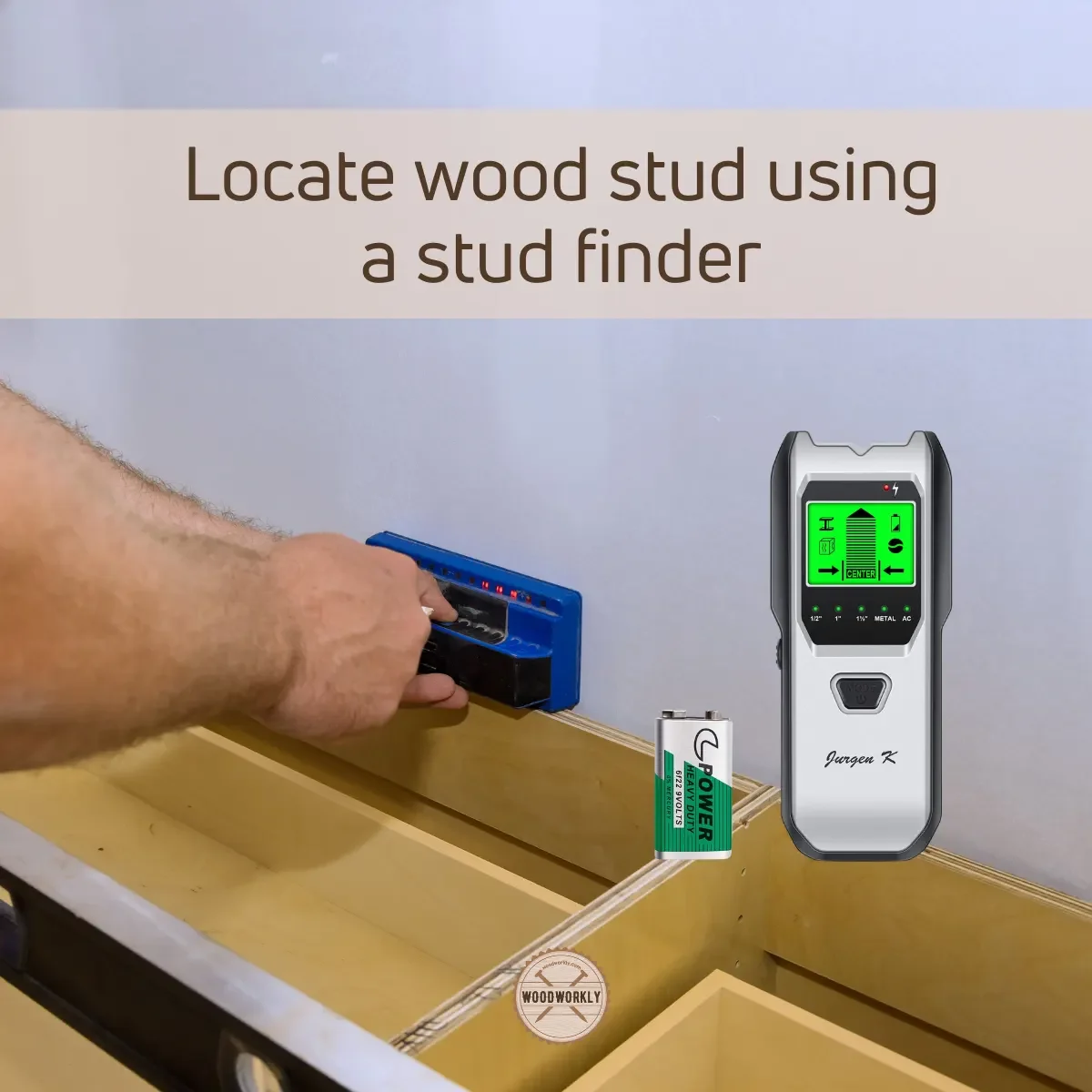
How To Locate Wood Studs With the Tapping Method?
- Take the measuring tape and draw a straight line from the nearest light switch or power outlet to your desired mount height.
- Knock or tap the area along the straight line and focus the sound
- When you hear a hollow sound tap a little to the left or to the right directions
- Upon tapping you’ll hear a solid sound
- Mark the spot with a pencil. That’s the left or right edge of a wood stud

How To Locate Wood Studs With Mobile App?
- Install the stud finder mobile app to your smartphone
- Open the app
- Take the measuring tape and draw a straight line from the nearest light switch or power outlet to your desired mount height.
- Move the phone along a straight line to the left or the right
- Monitor the beep sound
- Mark the location. That is the screw attaching the wood stud to the drywall.

Note that, the mobile device recognizes metallic things such as nails, electrical wires, and other screws as well. Therefore, better to check whether the same beep sound comes after a 16-inch distance which is the gap between wood studs.
2. Mark Drilling Points And Centers
After locating the position of the wood studs, mark the left and right edges of the wood stud.
You can identify the left and right edges by moving the stud finder device to see how the beep sound changes or by detecting the tapping sound and how sound changes from hollow to solid and vice versa.
Wood studs are mostly 2 inches wide. Therefore, the distance between the left and right edges should mostly be 2 inches.
Mark the left and right edges and then mark the center point with a pencil.
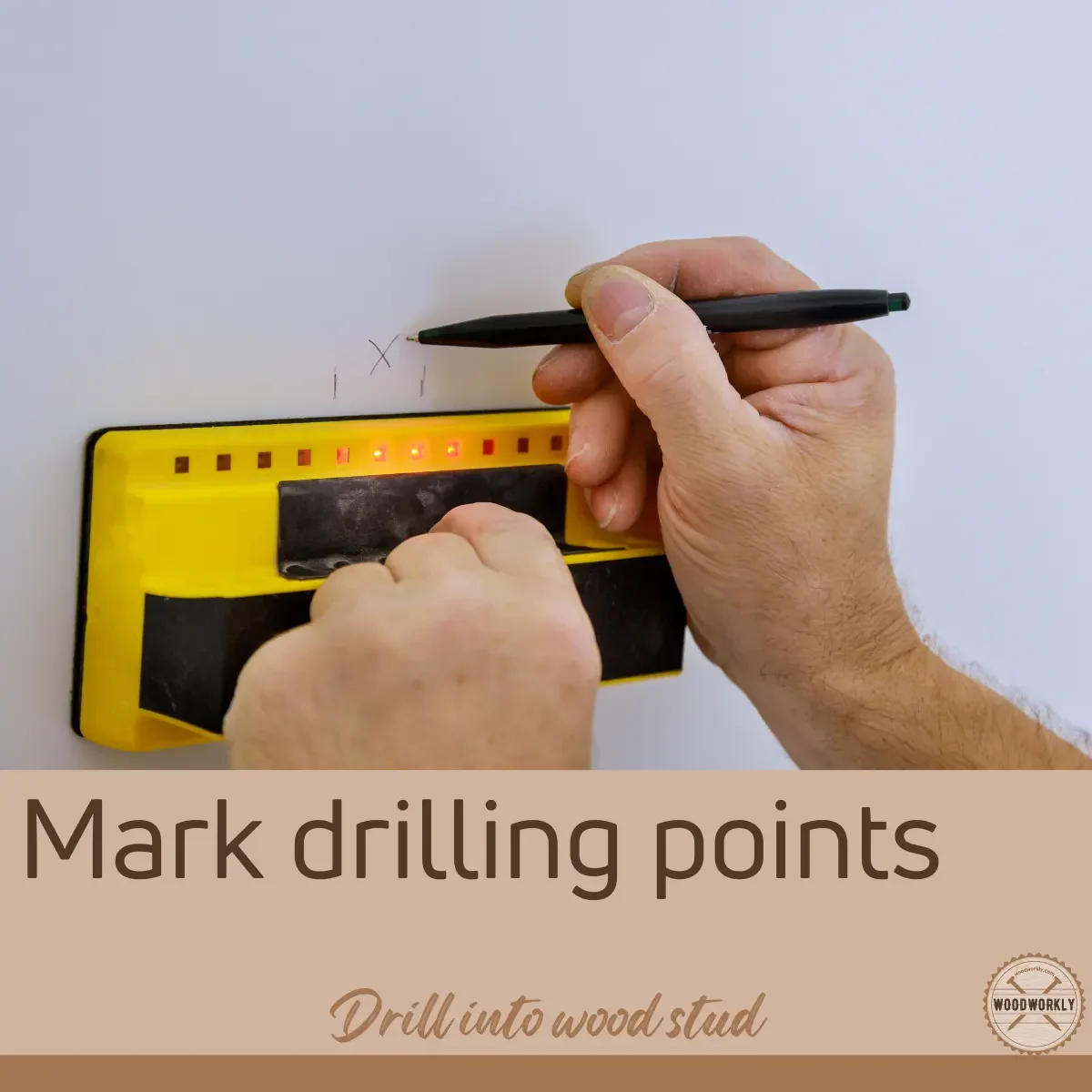
The center point of the wood stud is mostly located 1 inch to the inside from the left edge and 1 inch to the inside from the right edge.
Later you can erase those marks with an eraser.
Now you have marked the edges of the wood stud with the center point. The center point is the location where we drill the hole.
3. Select a Suitable Drill Bit
Generally, any drill bit can be used to drill wood studs. There’s no specialized drill bit to drill wood stud.
Spade bits and auger bits are good to drill wood studs. Select a drill bit that is smaller than the screw you’re going to use.
Use a drill bit that supports the installation of the screw. For example, if you’re willing to use a drywall screw, use a drill bit that fits it.
If you’re willing to hang a heavy picture frame or decorative item on the wall, the screw should be strong and sturdy. The drill bit is also the same as the screw but should smaller in size.

Drill bits need to be sharp enough to drive through the wood. Otherwise, your drill bit gets blunt or the wood stud will start to split causing so many troubles.
Sharp edges cut the wood easily without damaging the surroundings.
Therefore, use new drill bits or sharpen the drill bits you have before drilling the wood stud perfectly without any issues.
After selecting a suitable drill bit, it’s time to drill the wood stud.
4. Drill Pilot Hole With Small Drill Bit
Drilling a pilot hole into a wood stud is useful to drive screw easily into the wood stud, avoiding hitting the electrical wires, and making the maintenance easy.
Select a small, short drill bit according to the type of your wood stud.
The selected bit should be smaller than the screw you’re willing to use and long enough to drive through the wall and to drill around 1 inch deep into the wood stud.
Install a small drill bit to your power drill and place the tip on the marked center point of the wood stud and drill with an even pressure through the wall.

Drive the drill bit through the wall and around 1 inch deep into the wood stud. You’ll notice the pop and pressure difference as soon as the drill bit hits the wood stud after traveling through the wall.
After drilling the pilot hole take the drill bit with the power drill back. Now you have eased the process of drilling wood studs.
Now you just have to drive the big screw into the wood stud easily without worrying about the electrical wires or metal plates.
5. Drive The Screw
Now insert the screw into the drilled hole on the wood stud by inserting the drill into the screw head and drill straightforwardly to go through the wall.
Or you can use a hammer to drive the screw or nail through the wood stud through the drilled hole.
Make sure to keep the power drill and the screw steady until most parts of the screwdriver are in the drill hole.
When the screw drives about a third into the wall, move your hand back and apply a little more pressure. You’ll notice when the screw hits the wood stud.
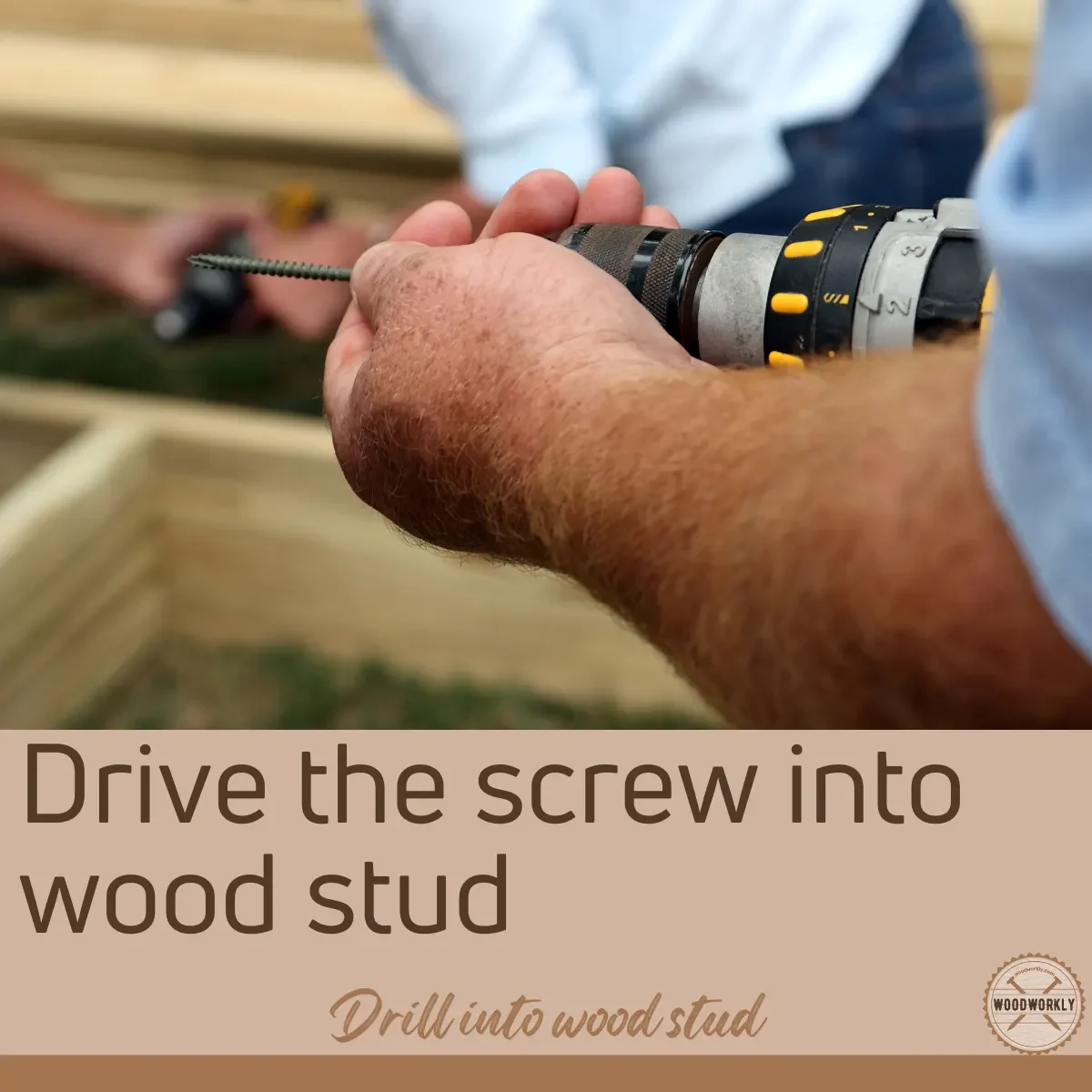
Leave a small area of the screw outside to hang whatever you want. Don’t drive the whole screw into the drilled hole since you’ll face a hard time when hanging.
That’s it, folks! Now you know how to drill into a wood stud without facing any troubles. Follow the method that suits you the most when locating the drilling point.
Does Drilling A Hole In A Stud Weaken It?
Yes, drilling a hole in a stud weakens it. But that depends on the amount of weight you put on the stud using the drilled hole. Heavy load on the drilling hole force lot of pressure on the stud which makes it weaken over time.
Plus, making bigger holes weakens the wood stud. Therefore, always drill a hole slightly bigger than the screw size and select the screw size based on your purpose.
Do the correct drilling from the first attempt since multiple holes weaken the wood stud even more.
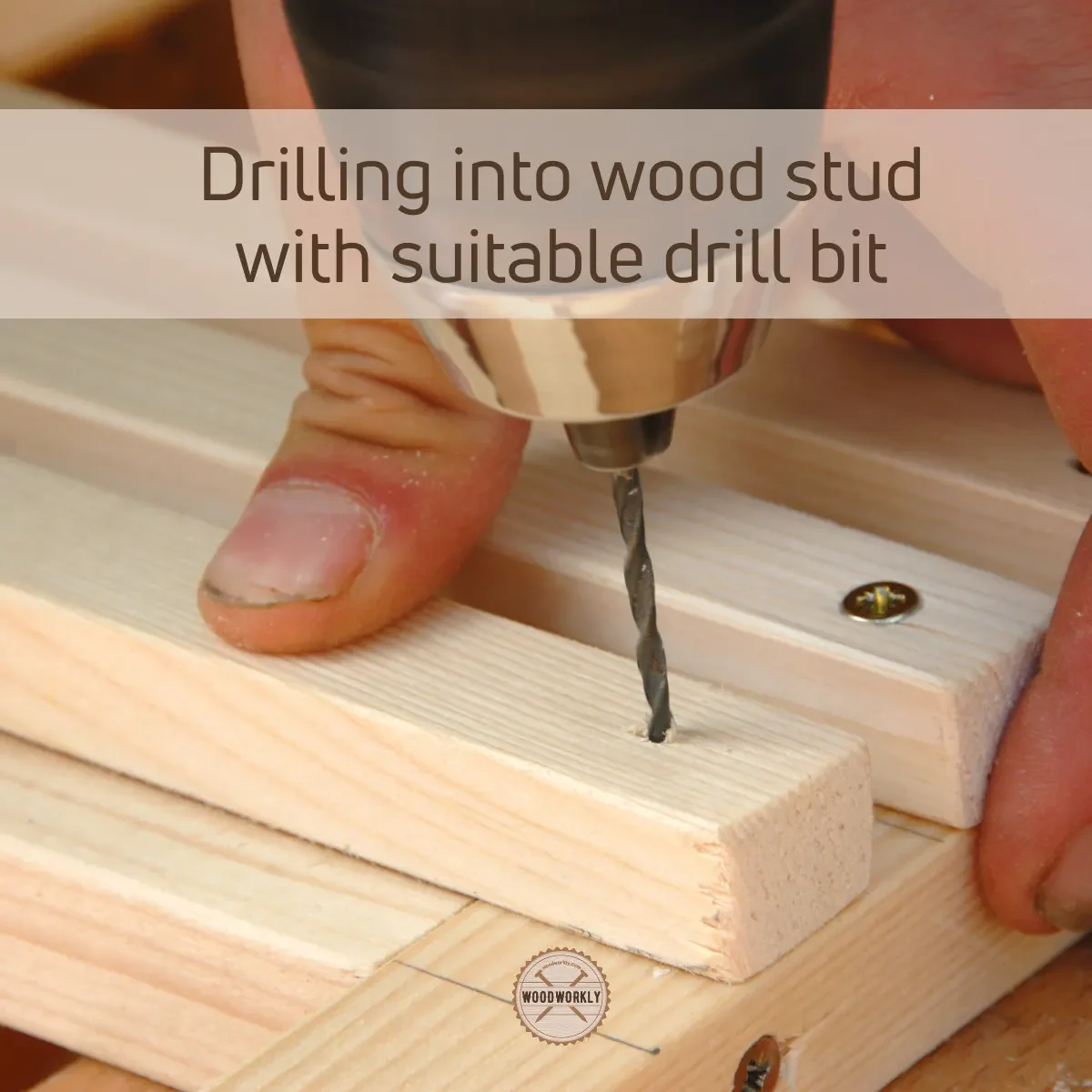
But hanging small decorative items with lightweight doesn’t weaken the stud. Especially when the wood type used to make wood stud is strong and dense.
Making too many holes in a stud weakens it. Drilling harms the wood structure and reduces the density of the wood stud which makes it weak and less durable.
Let’s answer some frequently asked questions.
Will I Hit Wire Drilling Into A Stud?
To avoid hitting wire when drilling into a stud, drill the center point of the wood stud. Locate the wood stud edges and center accurately using a stud finder and mark the location using a pencil before drilling.
Make a pilot hole before driving the screw directly inside the wood stud. The pilot hole should be long enough to travel through the wall and around 1 inch deep into the wood stud.
Never select a screw that is more than 2 inches long since being too long can hit the electrical wires when drilling into the wood stud.
A pilot hole prevents hitting electrical wire during drilling into a stud. Stop the drilling process as soon as you hit the metal plate.
You can feel metal plate due to the pressure difference when drilling and the drill bit won’t easily drill through metal plate like wood.
Electrical wires are placed below this metal plate. Therefore, focus on the pressure and the speed of drilling to avoid drilling through the metal plate which can hit the electrical wires inside.

Why Can’t I Drill Into Wood Stud?
There’re several reasons why you can’t drill into a wood stud. They are,
- Drill bits are not sharp enough to drill the wall and wood stud
- When the studs are steel
- When your power drill cannot make enough power to drill the wood stud
- When you locate wood studs incorrectly
- When you marked the center point of the wood stud incorrectly
- When drill bits are dull
- When you’re drilling in the wrong direction
- Incorrect drill rotation direction
Follow the process we discussed above to drill wood studs correctly without messing things up.
What Kind Of Drill Bit Do You Use For Wood Studs?
Spade bit and auger bit are great to use for wood studs. Generally, any drill bit works well when drilling wood studs.
Make sure drill bits are sharp enough to drill the studs without chipping the wood. unsharp drill bits get blunt and damage the wood studs when drilling.
How Far Can You Drill Into A Stud?
You can drill 1 ¼ inches from the edge of the wood stud. Drill a pilot hole into the wood stud that drills about 1 inch deep into the wood stud.
Never drill too deep into the wood studs since it can damage the electrical wires and pipes. Plus, drilling too deep into the wood stud weaken the wood stud and reduces its durability.
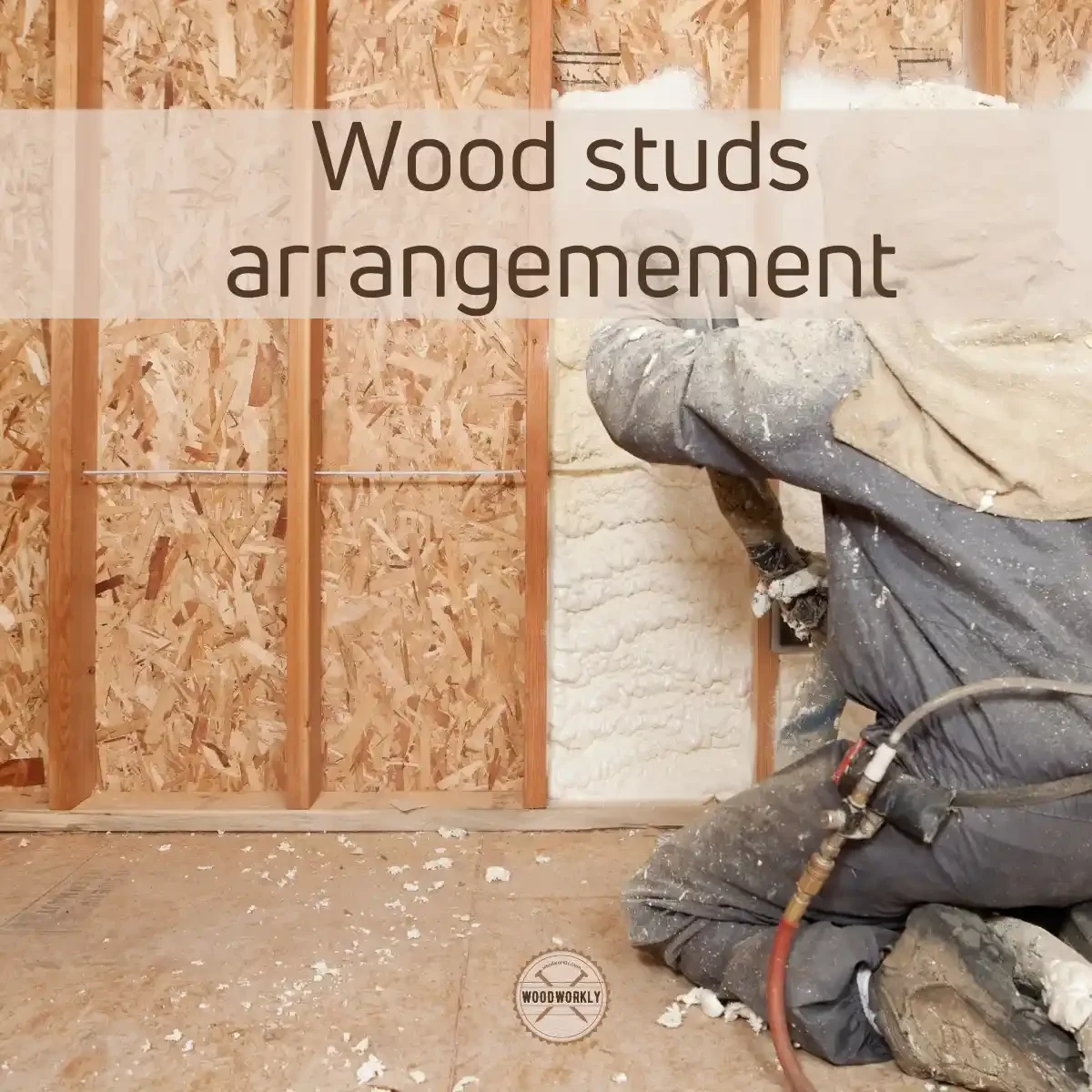
How Many Times Can You Drill Into A Stud?
You can drill many times in wood stud as long as the screw width is less than 40% of the width of the stud. But drilling too many holes into wood stud can weaken the wood.
Drill a maximum of up to 3 holes into a stud to avoid damaging the wood and to keep the wood stud stable for a long time.
Drilling multiple holes into wood stud is not an issue when the screw head width is little.
You can drill wood stud twice but consider about the width of the screw or nail you’re going to insert into the stud. Small nails and screws don’t harm the wood stud. But larger ones can significantly damage the structure of wood studs.
Did I cover all you wanted to know about: How To Drill Into Wood Stud?
In this article, we discussed, how to drill into wood stud correctly without messing things up, how to select a suitable drill bit, how to locate the wood stud position with ease, and lots of tips and techniques.
You can drill into wood stud by locating the wood stud using a stud finder or tapping method. Then, mark the edges and center of the wood stud. Select a suitable drill bit that is smaller than the screw. Drill a pilot hole that drill only 1 inch deep into the wood stud.
Furthermore, I’ve answered some frequently asked questions as well.
Hope you learned everything you wanted to know about, how to drill into wood stud correctly.
From now onwards you can DIY drill into wood stud without asking for help from professionals.
Try to drill scrap wood stud beams by yourself and practice enough until you face a big project to be a champ.